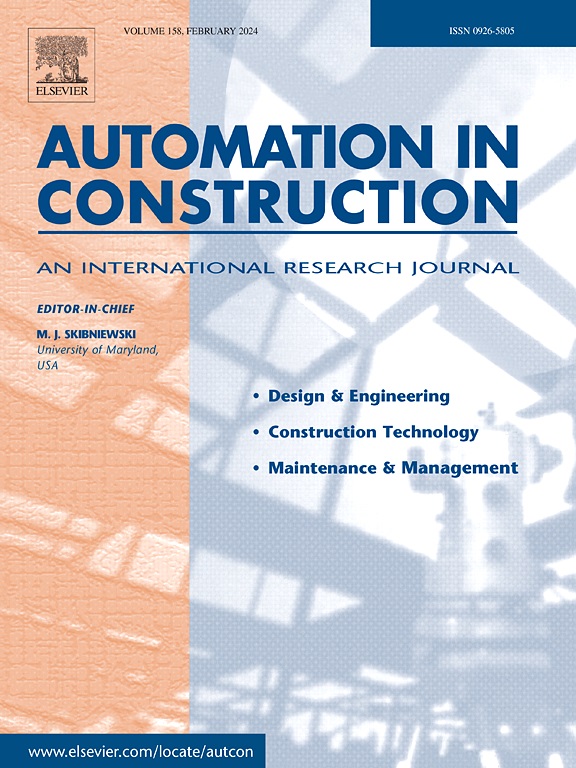自动加固 3D 打印工程水泥基复合梁
IF 9.6
1区 工程技术
Q1 CONSTRUCTION & BUILDING TECHNOLOGY
引用次数: 0
摘要
新兴的三维混凝土打印技术(3DCP)的发展一直受到两个重大挑战的阻碍:传统混凝土的抗拉性能较弱,以及在打印过程中难以同时放置钢筋。在本文中,具有优异拉伸性能的工程水泥基复合材料(ECC)与在 ECC 层之间铺设 CFRP 网片的过程中加固技术被战略性地复合在一起。对使用不同层数和结构的 CFRP 网片加固的 3DP-ECC 梁进行了四点弯曲试验。实验结果表明,CFRP 网片能与 ECC 协同变形,与未加固梁相比,3DP-ECC 梁的承载能力提高了 1.22-2.01 倍,而印刷梁的变形能力则适度降低。论文进一步提出了预测 3DP-ECC 梁承载力和弯矩-曲率关系的理论模型。本文验证了 CFRP 网格在加固 3DP-ECC 梁以实现高效 3DCP 建筑的可行性和有效性。本文章由计算机程序翻译,如有差异,请以英文原文为准。
Automated reinforcement of 3D-printed engineered cementitious composite beams
The advancement of emerging 3D concrete printing (3DCP) has been hindered by two significant challenges: the weak tensile properties of conventional concrete and the difficulty of simultaneously placing reinforcement during printing. In this paper, engineered cementitious composites (ECC) with superior tensile properties along with an in-process reinforcement technique through laying CFRP meshes between ECC layers were strategically composited. Four-point bending tests were performed on 3DP-ECC beams reinforced with different layers and configurations of CFRP mesh. Experimental results demonstrated that CFRP meshes can deform collaboratively with ECC, and enhance the load bearing capacity of 3DP-ECC beams to 1.22–2.01 times compared to that of unreinforced beam, while moderately decrease the deformation capacity of printed beams. A theoretical model for predicting the load bearing capacity and bending moment-curvature relationship of 3DP-ECC beams was further proposed. This paper validated the feasibility and effectiveness of CFRP mesh in reinforcing 3DP-ECC beams for efficient 3DCP construction.
求助全文
通过发布文献求助,成功后即可免费获取论文全文。
去求助
来源期刊

Automation in Construction
工程技术-工程:土木
CiteScore
19.20
自引率
16.50%
发文量
563
审稿时长
8.5 months
期刊介绍:
Automation in Construction is an international journal that focuses on publishing original research papers related to the use of Information Technologies in various aspects of the construction industry. The journal covers topics such as design, engineering, construction technologies, and the maintenance and management of constructed facilities.
The scope of Automation in Construction is extensive and covers all stages of the construction life cycle. This includes initial planning and design, construction of the facility, operation and maintenance, as well as the eventual dismantling and recycling of buildings and engineering structures.
 求助内容:
求助内容: 应助结果提醒方式:
应助结果提醒方式:


